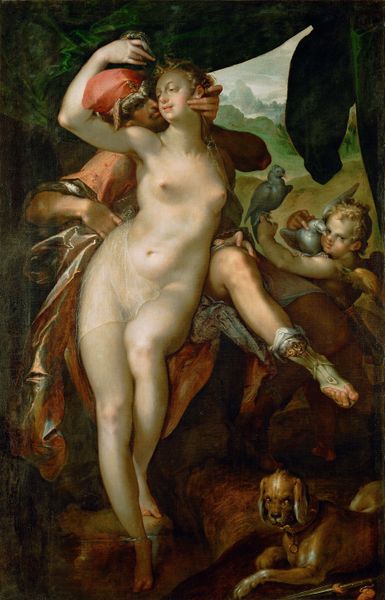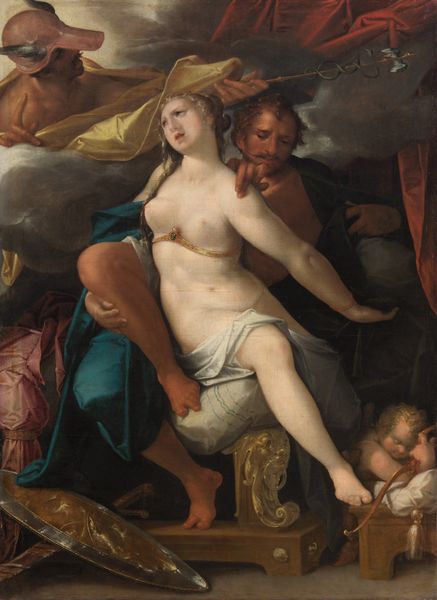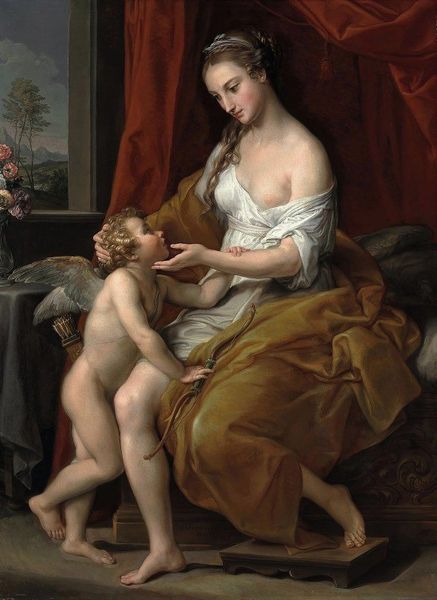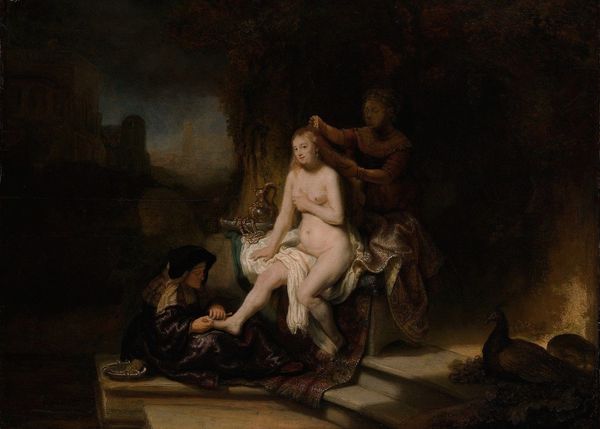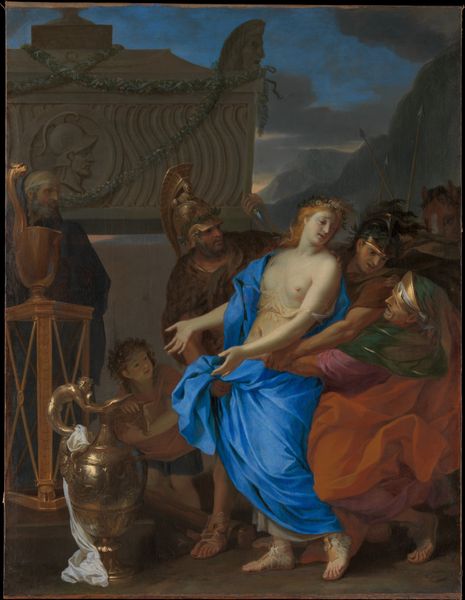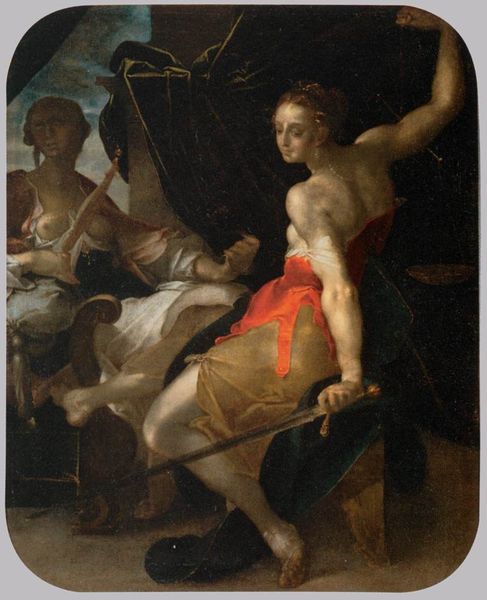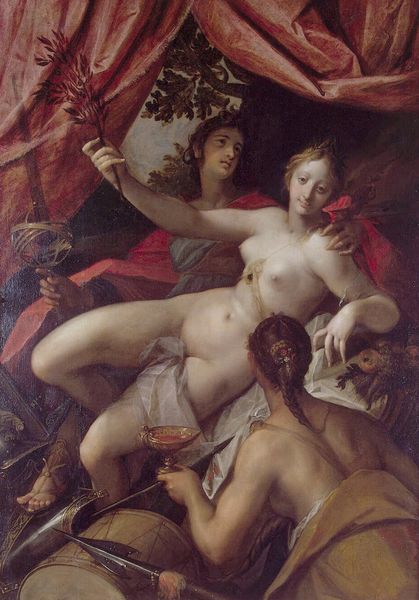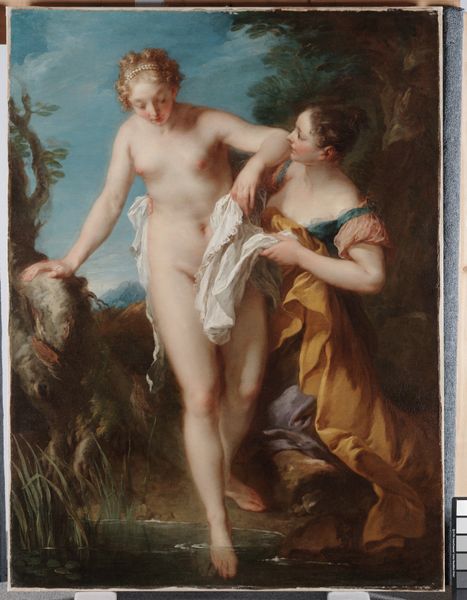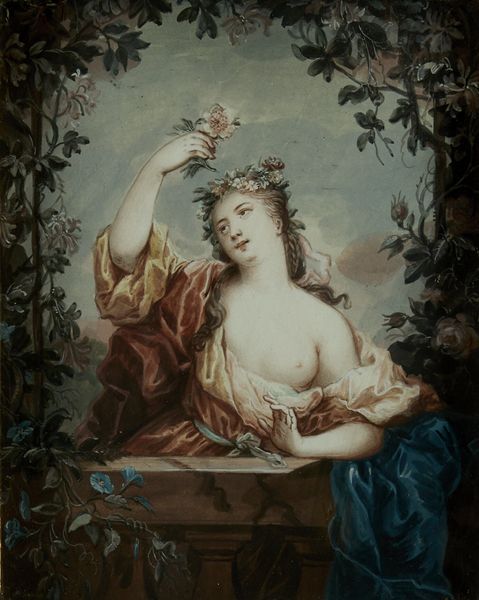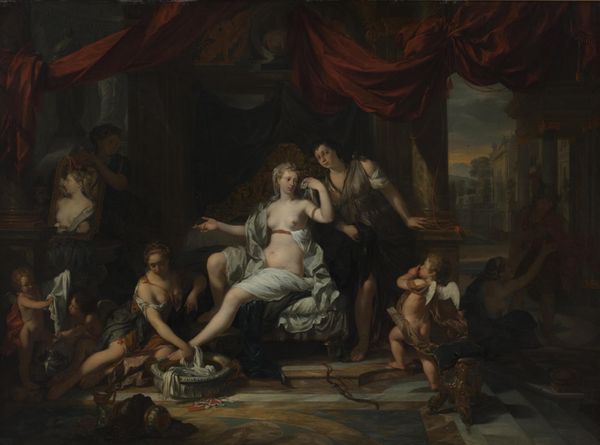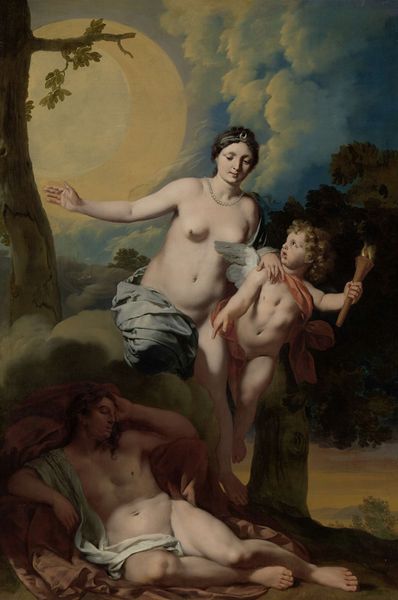
oil-paint
#
gouache
#
allegory
#
baroque
#
fantasy art
#
oil-paint
#
history-painting
#
nude
Dimensions: height 113 cm, width 102 cm
Copyright: Rijks Museum: Open Domain
Barend Graat painted Pandora with oil on canvas, a fairly conventional choice for the time. It’s interesting to think about how the texture of oil paint affects the painting's reception. With its smooth surface, it draws our attention to the narrative, the classical subject matter, and the symbolism of Pandora’s box, rather than the labor or the skill involved in its creation. But of course, there was a great deal of expertise involved. Consider the layering of the paint to create light and shadow and the complex folding of the drapery. This demonstrates the artist's mastery, and their understanding of the materials and processes. However, paintings like this were also designed to show off the wealth of the patron, an indulgence underwritten by the labor of others. The finished artwork, therefore, hides the social relations of its making. When we focus on the materiality and production of a work like Pandora, the classical subject matter becomes secondary to the social context in which it was produced.
Comments
rijksmuseum about 2 years ago
⋮
The Greek god Zeus sent Pandora to the earth with a box containing all evils. Pandora opened the lid, causing the evils to spread among humanity. In this painting the container is represented by Adam van Vianen’s ewer, which was over sixty years old when the picture was painted. Barend Graat has added a second handle and omitted the lid.
Join the conversation
Join millions of artists and users on Artera today and experience the ultimate creative platform.

